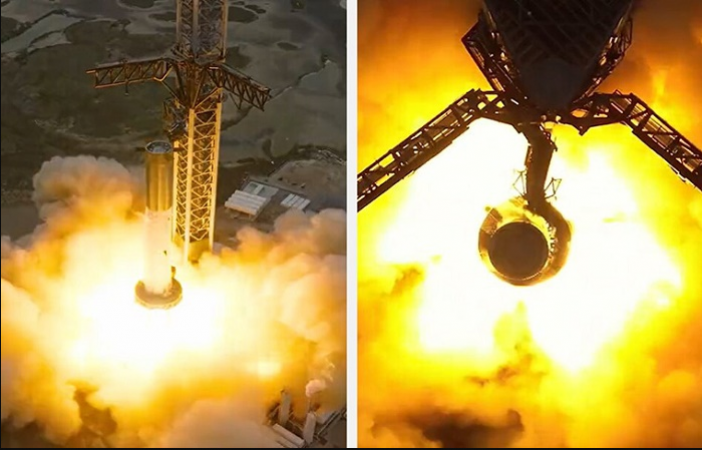
Washington: The most potent rocket ever built, which SpaceX plans to use to launch astronauts to the Moon and beyond, successfully tested its engines on Thursday.
At the Texas base of the for-profit space company, the static fire test of the 33 Raptor engines on the Starship's first-stage booster took place.
Elon Musk, the founder of SpaceX, claimed that one engine was shut off just before the test began, and another engine shut itself off.
Musk tweeted, "So 31 engines fired overall." But there are still enough engines to enter orbit. According to SpaceX, the test went for its "full duration."
Also Read: Nicaragua releases 222 Ortega opponents and sends them to the US
The test firing, which lasted several seconds, produced enormous sheets of orange flames and billowed clouds of smoke into the air. During the test-firing, the 230-foot (69-meter) Super Heavy booster was anchored to the ground to prevent it from taking off. The first-stage booster that was tested on Thursday and a reusable capsule for crew and cargo make up the Starship.
Also Read: US claims China's balloon could gather signals intelligence
At a conference in Washington on Wednesday, SpaceX's president and COO Gwynne Shotwell predicted that if the test was successful, the company's first orbital launch could happen in about a month. Before we light 'em up and take off, this is really the last ground test we can conduct, according to Shotwell.
As part of the Artemis 3 mission, scheduled for 2025 at the earliest, NASA has chosen the Starship capsule to transport its astronauts to the Moon. The Space Launch System, a heavy rocket that has been in development for more than ten years, will be used by the US space agency to launch astronauts to lunar orbit.
Also Read: Abraham Lincoln's soul still wanders in White House? Many veterans have claimed
Starship is more powerful and larger than SLS. More than twice as much thrust as the Saturn V rockets used to launch the Apollo astronauts to the Moon, it produces 17 million pounds of thrust. In the future, SpaceX plans to launch a Starship into orbit, refuel it with another Starship, and then send it on its way to Mars or beyond. Blue Origin's other super-heavy rockets are also in development.